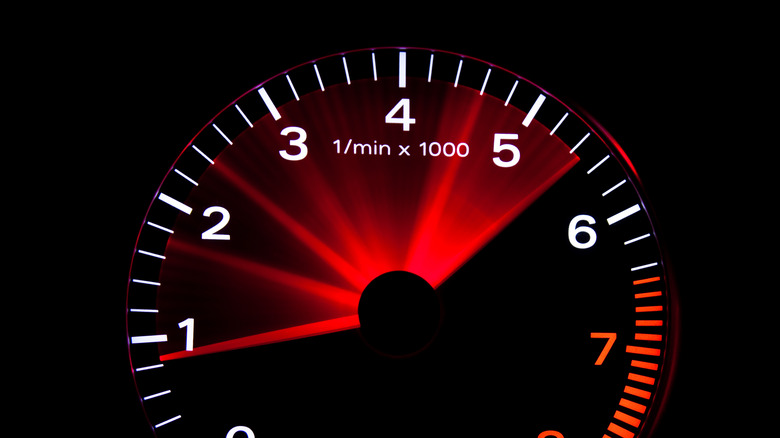How To Rev The Engine In An Automatic Car
For many drivers, engine revving is not necessarily a good thing, as it can signal that you are, perhaps, being overly aggressive behind the wheel, or even worse, that you've got a potentially serious problem with your engine or transmission. Of course, revving is not uncommon for hot-rodders with an affinity for hearing their vehicle's engine roar. Likewise, revving an engine can serve a few positive purposes, including helping raise engine temperature to check oil or other vital fluids, and warming a car engine on a cold day (even if this is, perhaps, not the best method for doing so).
If you don't know what revving is, the term is pretty self explanatory, and involves using a vehicle's accelerator to swiftly elevate the RPMs (revolutions per minute) of the engine. Those RPM levels can be seen displayed on a vehicle's in-dash tachometer, with the logic being that the more RPMs a car can safely push, the more speed and power its engine can produce. Generally speaking, occasional engine revving can be a healthy habit, but revving too long or too often past red line RPM levels is dangerous, and can seriously damage your engine.
However, there are safe ways to rev your engine whenever circumstances deem that you need to take that course of action with your car, and they can each be done whether you're working with a manual or automatic transmission. Here's how to safely rev your engine if you're driving the latter.
Revving the engine of your automatic car
As noted, there are any number of reasons you might need to rev the engine of your car, truck, or SUV, and it's a relatively easy process for automatic vehicles when done correctly. Whether you're looking to warm your engine and its fluids, are attempting to figure out the cause of pesky squeals or misfires, or just want to hear your engine briefly purr while parked in the driveway, follow these easy steps to safely rev your automatic engine.
- With your car in park, start the engine and let it idle (typically 1,000 RPM) for a few minutes to properly warm up.
- It is vital that you rev your engine only after the oil therein has warmed enough to sufficiently lubricate engine components.
- With the engine and oil warm, move the gear selector into Neutral.
- Delicately press the accelerator with your foot, and note the increase in RPM on the tachometer.
- Slowly decrease the level of pressure on the accelerator.
- Continue pressing and releasing the accelerator as necessary.
The following steps can also be undertaken when the vehicle is in Park. It is, however, vital that you keep in Park or Neutral while revving, as this will prevent any dangerous or unintentional movement of the vehicle when pressing the accelerator. You can also help limit the potential for accidental movement by revving the engine with your foot firmly pressed on your vehicle's brake pedal. Likewise, it is important to monitor your engine's heat levels during the process, as prolonged revving may lead to elevated, and potentially dangerous conditions.

